Part 2: Labeling
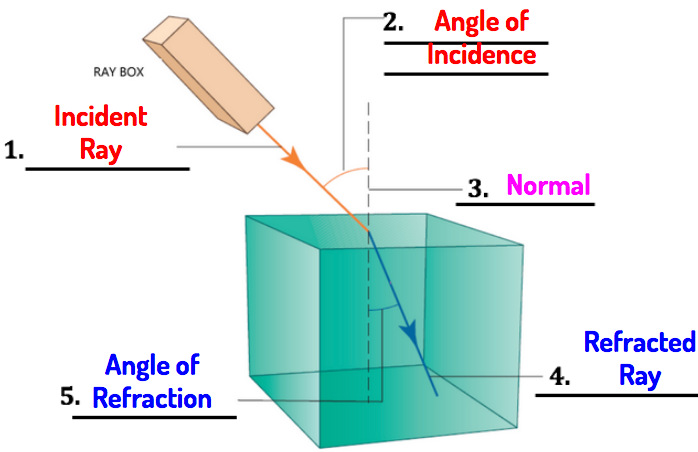
1. Incident Ray – Incoming light ray that strikes the surface.
2. Angle of Incidence – The angle at which the incident ray hits a surface
3. Normal – A line perpendicular to the surface. Usually drawn at 90 degrees.
4. Refracted Ray – Outgoing light ray that bends as it moves into a new media.
5. Angle of Refraction – The angle at which the refracted ray moves through the media.

6. Incident Ray-Incoming light ray that strikes the surface.
7. Angle of Incidence –The angle at which the incident ray hits a surface
8. Normal –A line perpendicular to the surface. Usually drawn at 90 degrees.
9. Reflected Ray – Outgoing light ray that reflects off the surface.
10. Plane Mirror –Flat mirror that produces an image through specular reflection
11. Angle of Reflection – The angle at which the reflected ray leaves a flat mirror.
Part 3: Ray Diagrams
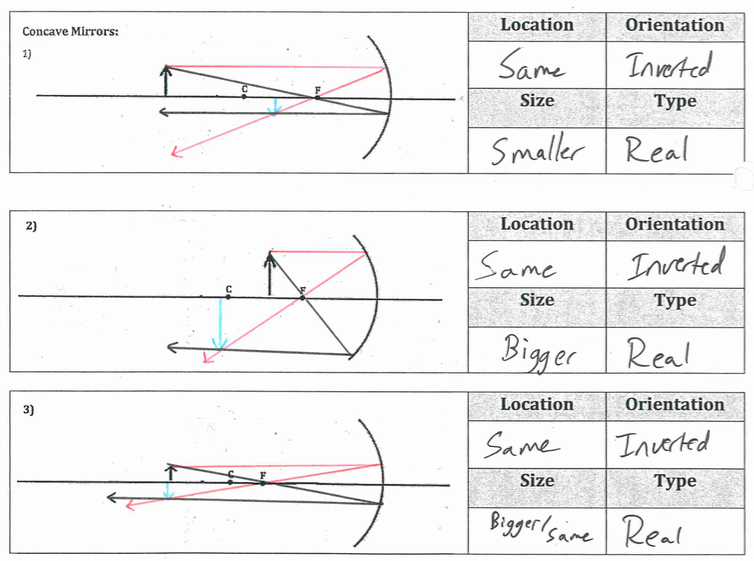
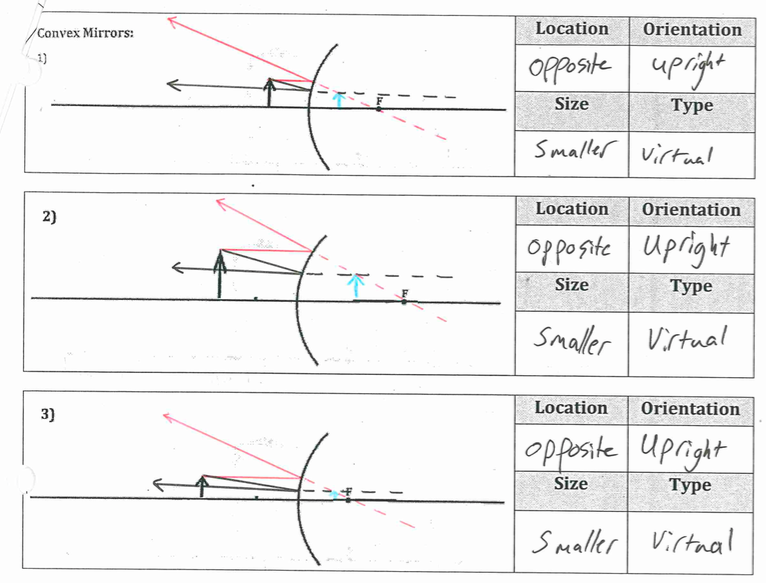
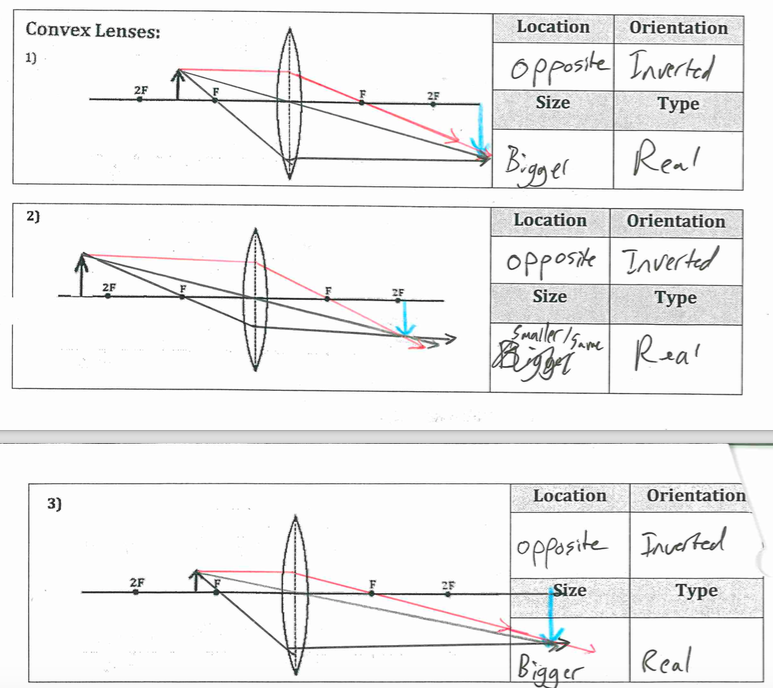
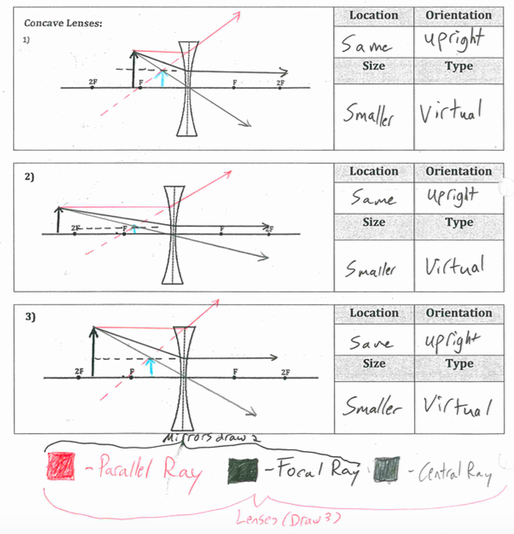
Part 4: Short Answer
1.Your friend has recently taken up spear fishing, however they have been unsuccessful. Your friend claims they throw their spear directly at the fish but keep missing! Using your knowledge of optics and how light travels, describe to him what is happening and where he should aim if he wants to hit the fish.
Our brain assumes light is traveling in a straight line so the fish looks straight ahead of us. However the fish is actually lower than we see it! The light refracts towards the normal since water is more dense! Refraction is the bending of light when it moves into a different media. The more dense a media is, the slower light moves through it. Since light moves as a wave, one side of the light wave will hit the water first and slow down first. The other side will continue moving faster until it hits the water. This causes it to “turn” or bend.
If we want to hit the fish, we need to aim below it!
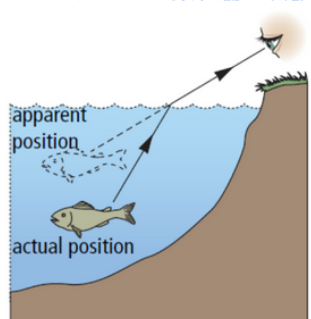
2. Why does light bend when going through a different material?
Refraction is the bending of light when it moves into a different media. The more dense a media is, the slower light moves through it. Since light moves as a wave, one side of the light wave will hit the water first and slow down first. The other side will continue moving faster until it hits the water. This causes it to “turn” or bend.
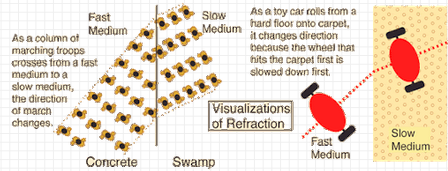
3. Fill in the table below:
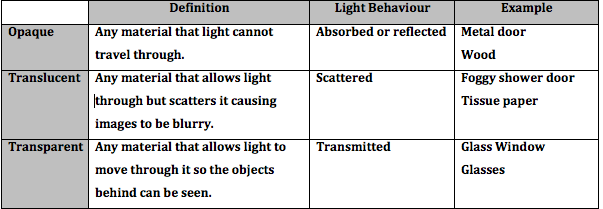
4. Give 2 pieces of evidence that supports the statement “Light moves as a particle”
1. Light moves as a straight line and causes shadows to form.
2. Images formed in a pinhole camera or on our retina are inverted. Light moves at a straight line for this to occur.
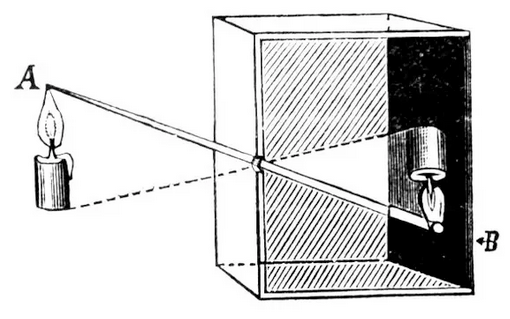
5. Give 2 pieces of evidence that supports the statement “Light moves as a wave”
1. In the double slit experiment light creates a shadow/light pattern on the screen. This indicates light is interacting with each other – some cancel causing shadows, some join together creating brighter spots.
2. Light refracts when moving through different materials. Indicates light “spreads out” as one side of the light slows down before the other.
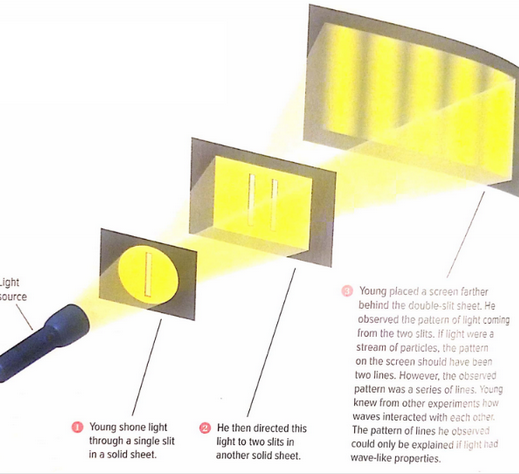
Comments by shaun pletsch